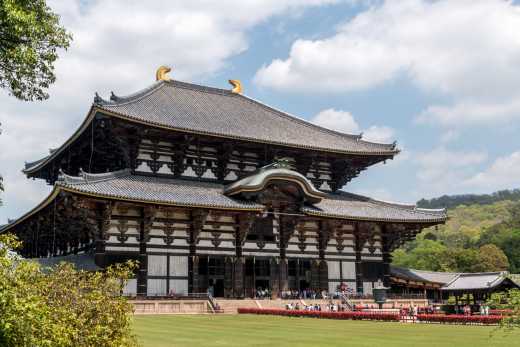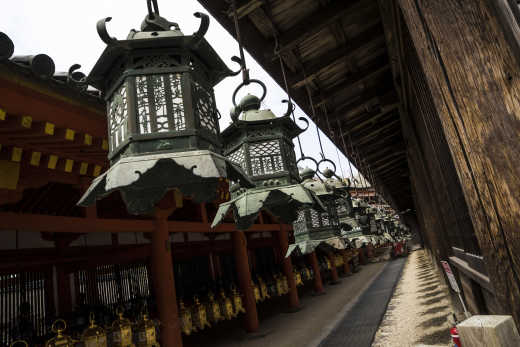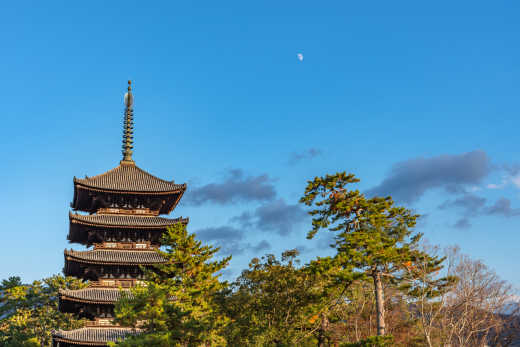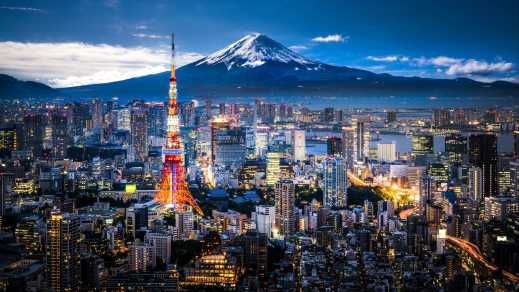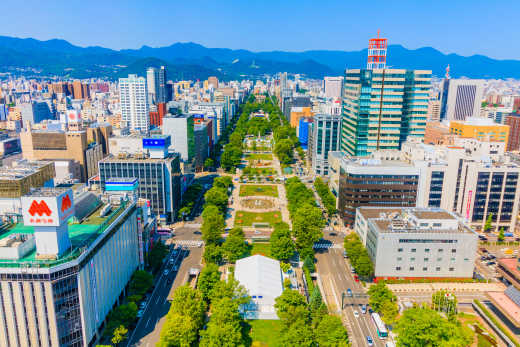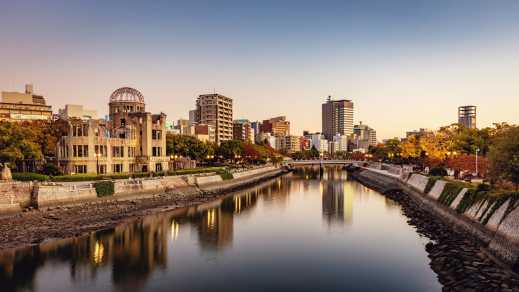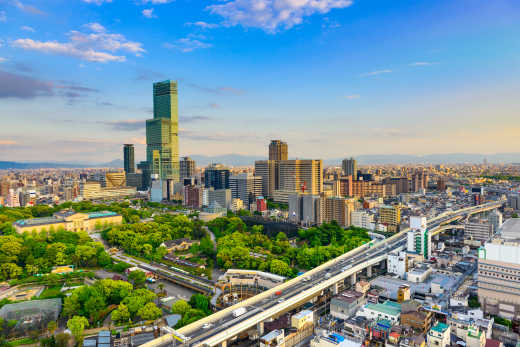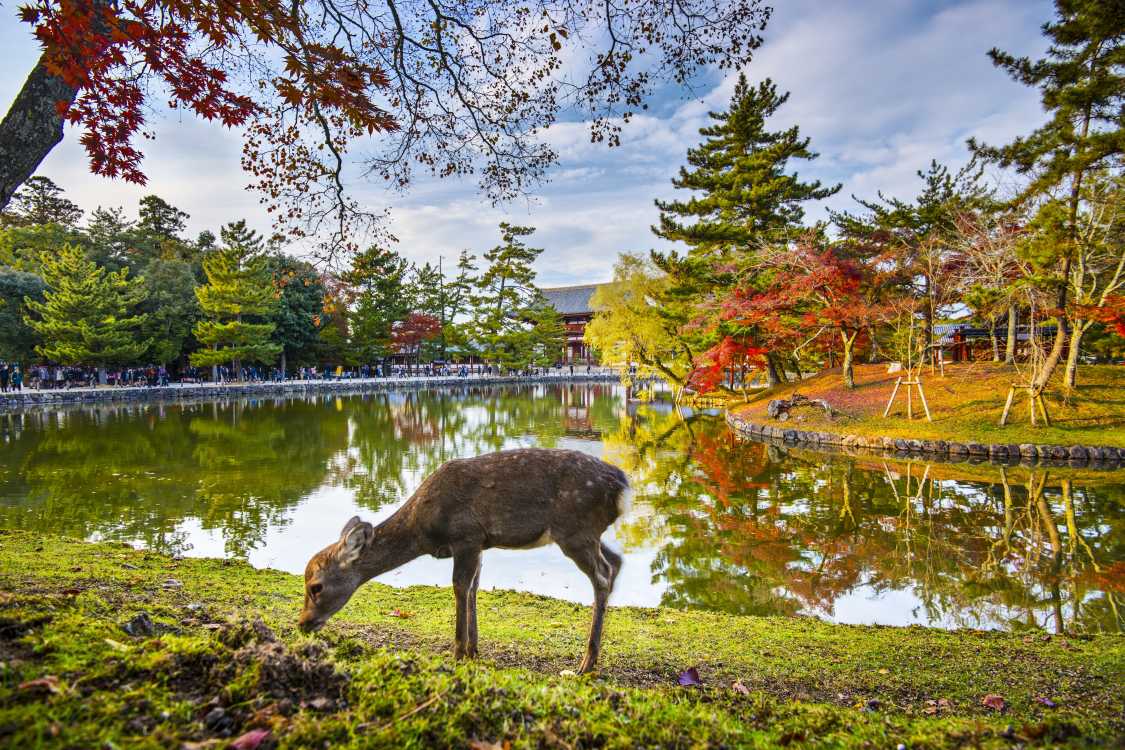
Nara Tours
The top sights, highlights, tours & travel itinaries curated by our Travel Experts.
Our Expert Tips for Your Nara Tour
Nara is one of the most fascinating cities in Japan, no other offers you a greater number of historical buildings and temples. In the 8th century, Nara was the capital of the Empire of Japan under the name Heijō-kyō. Many of the magnificent buildings and sites date from this period and have been designated an important part of the World Heritage Site by UNESCO because of their cultural significance.
Most of the sights are relatively close together and can be easily reached on foot as part of a one-day sightseeing tour. Less
![Asia Japan Nara Tōdai-ji Temple Japan Nara Tōdai-ji Temple]()
Tōdai-ji Temple
The largest structure in the world constructed of wood
![Asia Japan Nara Kasuga-Taisha Nara Kasuga-Taisha]()
Kasuga-Taisha
A spacious temple complex in Nara Park
![Asia Japan Nara Kofuku-ji Temple Nara Kofuku-ji Temple]()
Kofuku-ji Temple
The temple with its striking pagodas
What to See During Your Nara Tour?
1. Tōdai-Ji Temple
The Tōdai-ji Temple, translated as "Great Temple of the East," awaits you with the largest structure in the world constructed entirely of wood: the approximately 3,000-square-meter, 50-meter-high main hall. The interior of the temple is dominated by the 18-meter-high copper statue of Daibutsu Buddha. Like the temple, the Daibutsu Buddha dates from around the year 750. Also worth seeing are the shrine to the Shintō deity Hachiman and the entrance gate, which was not built until 450 years later, with its guardian statues on either side.
2 Kasuga-Taisha Shintō Shrine
The path to this sprawling temple complex leads through Nara Park, home to more than 1,000 sika deer that aren't shy about visitors. In spring, the blossoming cherry trees transform Nara Park into a white wonderland. Around the temple buildings stand countless lanterns made of stone or metal, donated by believers over the centuries. Although the Kasuga-Taisha also has its origins in the 8th century, the individual buildings have been rebuilt again and again, albeit in the old form.
3 Kofuku-Ji Temple
The most prominent buildings of Kofuku-ji Temple are the two pagodas Sanjūnotō and Gojūnotō. The latter is Japan's second tallest pagoda, standing over 50 meters high. The three magnificent main buildings, Hokuendō, Tōkondō and Chūkondō, house numerous sculptures and sacred objects that are among Japan's most important national treasures. The complex was built as early as the mid-7th century, but was largely destroyed in 1180 during a warlike conflict between two samurai families. Only a short time later, the complex was rebuilt true to the original, which you can visit today on your Nara vacation.
4. The Buddhist Shrines of Hōryū-Ji
The temples of Hōryū-ji await you in the enchanting countryside surrounding the small town of Ikaruga. Some of the temples are considered to be the oldest structures in the world built of wood. The impressive five-storey pagoda is almost 1,500 years old and is considered the oldest structure of its kind on the Japanese islands. Discover numerous statues, religious buildings and even examples of early Japanese residential architecture here. In the Gallery of Temple Treasures, a representative exhibition awaits you with valuable and unusual exhibits from all Japanese eras.
5. Yakushi-Ji temple
This Buddhist temple and its unusual pagodas are located in the Nishinokyo district, about six kilometers west of Nara Park. All the buildings have only recently been extensively restored and give an unusually authentic impression. The eastern of the two pagodas is particularly worth seeing. The tower building amazes with an architectural illusion. The facade design and the stepped roofs suggest six storeys, but in fact there are only three. The Tōtō Pagoda owes the attribute "frozen music" to this unusual design, as the form seems to follow a musical rhythm.
6. Nara National Museum
A visit to the National Museum will help you better understand the significance of the temples on your Nara vacation. The elegant museum building dates back to 1894, and its facade shows clear echoes of the European Renaissance style. Admire religious artifacts and ritual objects here from Japan, as well as China. The east wing of the National Museum is reserved for exhibits from the "treasury" of the nearby Tōdai-ji temple. Around the museum there is a beautiful park with the famous Hassōan Tea House, an architectural jewel from the Edo period. Less
Other Places to Visit During Your Tour
TourlaneCare

